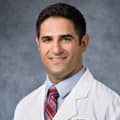The lateral collateral ligament (LCL) does not heal as well on its own compared to other knee ligaments, such as the medial collateral ligament (MCL). When an LCL tear fails to adequately heal, or if the tear is severe, surgery to repair or reconstruct the LCL may be recommended.
In This Article:
- Lateral Collateral Ligament (LCL) Injuries
- Symptoms of LCL (Lateral Collateral Ligament) Tears
- Lateral Collateral Ligament (LCL): Causes and Risk Factors
- Diagnosing Lateral Collateral Ligament (LCL) Tears
- Nonsurgical Treatment for LCL (Lateral Collateral Ligament) Tears
- Surgical Treatment for LCL (Lateral Collateral Ligament) Tears
LCL Repair Surgery
Repair surgery is most often done on two types of LCL tears.
The first is when the damage is located where the ligament attaches to the thighbone (femur) or shinbone (tibia). The surgeon will reattach the torn ligament to the bone using large sutures (strong medical thread), screws, or staples; LCL repair is typically an open procedure because the LCL is located outside the knee joint and cannot be visualized with an arthroscope (a tiny camera placed in the knee joint).
See Guide to Knee Joint Anatomy
The other type of repair surgery is performed when the LCL is torn in the middle. In these cases, the surgeon will use strong and durable surgical thread to sew the torn ends back together. This surgery is only appropriate if the tear is relatively recent (within a few weeks from when the injury occurred).
LCL Reconstruction Surgery

During LCL surgery, the graft is attached to the thighbone and lower leg bone using screws and sutures.
If a lateral collateral ligament cannot be repaired, a surgeon will recommend reconstruction surgery. LCL reconstruction removes the damaged LCL tissue and replaces it with a tendon graft. The tendon graft is typically taken from elsewhere in the knee, such as the hamstring tendon, or from a human tissue donor, called a cadaver.
LCL reconstruction surgery is an open procedure, which means the surgeon will make 1 or 2 large incisions on the outside of the knee in order to get a full view of the area. The surgeon will attach the graft to the femur (thighbone) and fibula (lower leg bone) using surgical screws and sutures.
LCL Surgery Recovery
The exact timeline for recovery from LCL surgery will depend on the severity of the tear and if there were other knee injuries present.
Generally, a person can leave the hospital a few hours after surgery, although some people require an overnight stay. After leaving the hospital, recovery often includes:
- The use of crutches for up to 6 weeks
- Icing the area to reduce swelling
- Pain medication
A physical therapy rehabilitation program can begin as soon as a person is off crutches and weight bearing, which is generally 4 to 6 weeks. A formal physical therapy routine is used to increase strength and flexibility as well as restore balance and proprioception.
Depending on the type of activity a person wishes to return to, especially those who participate in vigorous activity, full recovery can take up to 6 months. Some people may choose to scale back high-impact activities after surgical repair or reconstruction.


